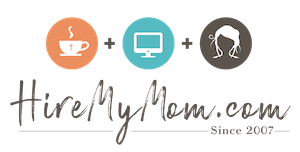How to Create a Lasting Legacy Business with Remote Work

When you start your own business, that does not mean it will continue in perpetuity without you. Anyone can establish a company, but it takes long-term planning to create a brand that will last. While remote work is extremely popular, it might seem like it will be difficult to maintain a legacy business, but that is far from the truth!
Advantages of Remote Work for Legacy Enterprises
Integrating remote work into a legacy business model provides several advantages. Firstly, it offers unparalleled flexibility and scalability. Employees can work from anywhere, which boosts engagement and reduces burnout. In fact, 36% of workers prioritize the flexibility of remote work over a pay raise.
Moreover, remote work can significantly cut costs associated with maintaining physical office spaces, thereby increasing profitability. By adopting a remote-first approach, businesses can reinvest savings into growth initiatives.
Another major advantage is access to a broader talent pool. Businesses are no longer restricted to hiring locally; they can now attract talent from all over the globe. This diversity in skills and perspectives can fuel innovation and competitive advantage. Furthermore, studies show that 40% of employees feel more productive when working remotely, which can drive better business outcomes.
Crafting Your Legacy Business Plan
Start by setting clear goals and a vision that align with your long-term aspirations. What impact do you want your business to have, and what legacy do you aim to leave?
Identify your target market by understanding your audience’s needs and preferences, crucial for crafting strategies that resonate and create lasting value. Who are you wanting to offer your products and services to?
Develop a sustainable business model by considering how remote work can be integrated to support your goals. Think about revenue streams, cost structures, and how to maintain profitability over the long term. How can you structure your business so that it is long lasting?
Regularly revisit and refine your business plan to adapt to market changes and new opportunities. This ongoing process helps ensure that your legacy business remains resilient and forward-thinking. Always ask yourself, what can we be improving upon within our processes?
Sustaining Longevity and Expansion
Innovation is critical to maintaining the long-term success of your business. Stay updated on industry trends, and be willing to adopt new technologies and methodologies that can give your business an edge. Encourage a culture of continuous improvement within your team, fostering an environment where new ideas are welcomed and tested.
Customer loyalty is another cornerstone of lasting success. Focus on building strong relationships with your clients by consistently delivering exceptional value and maintaining high service standards. Satisfied customers are more likely to become repeat clients and advocates for your brand. Additionally, consider diversifying your offerings to adapt to changing market needs and expand your revenue streams. Whether it’s introducing new products or services, entering new markets, or forming strategic partnerships, diversification can provide stability and growth opportunities.
Measure your business’s performance regularly to ensure you’re on the right track. Use key performance indicators (KPIs) to gauge your progress towards your goals and identify areas for improvement. Regular evaluations allow you to make data-driven decisions that can propel your business forward.
Employee development is another crucial factor. Invest in training and development programs that help your team acquire new skills and stay engaged. A skilled and motivated workforce is more likely to contribute to the business’s long-term success.









